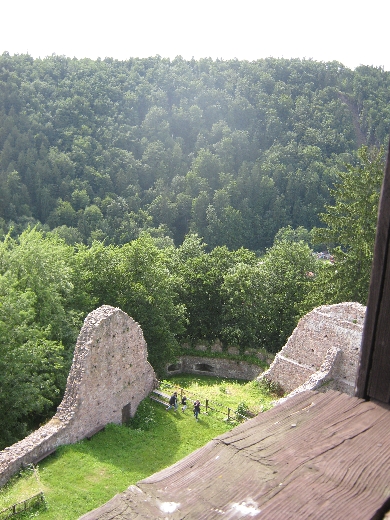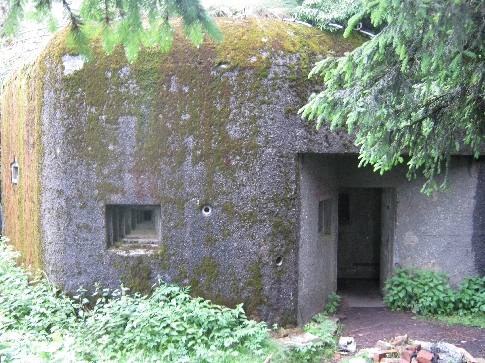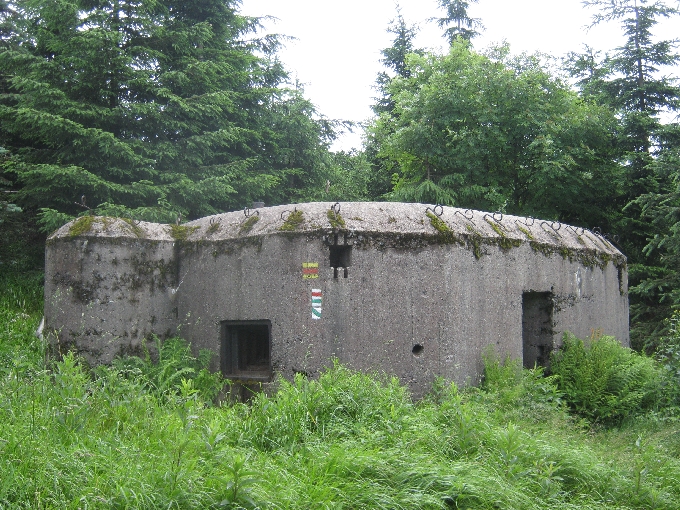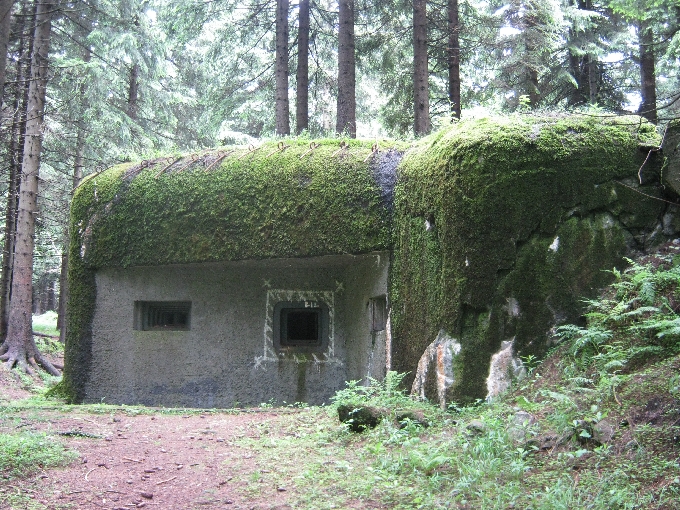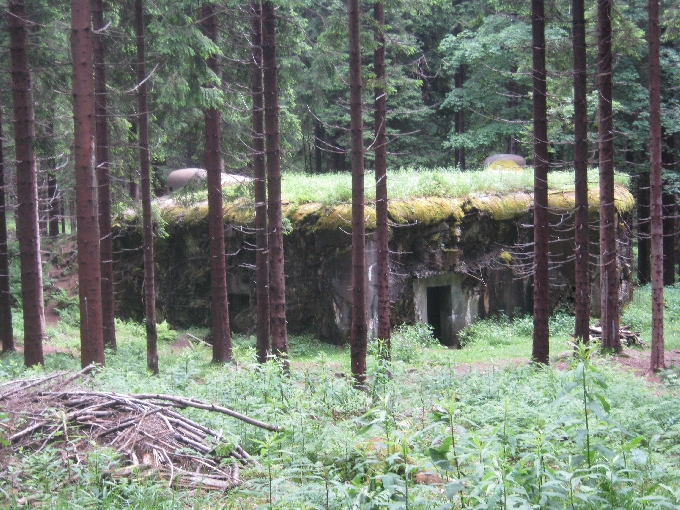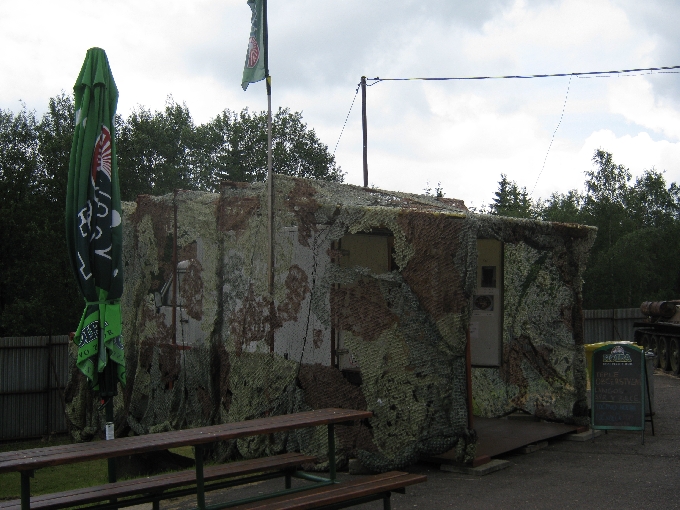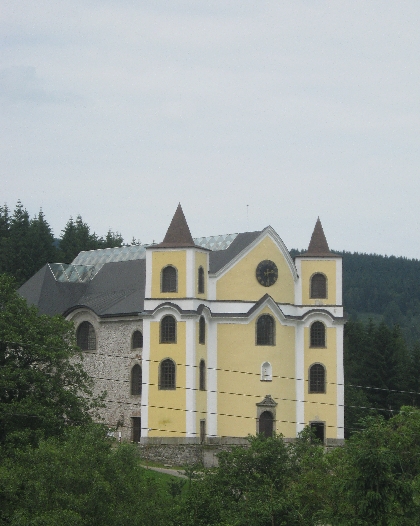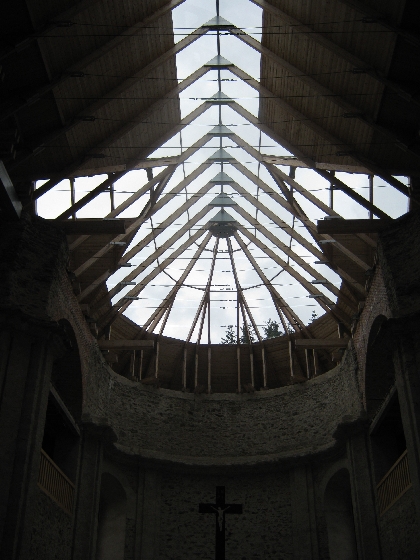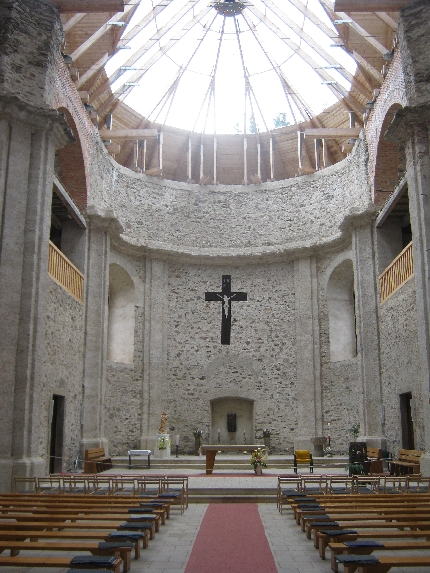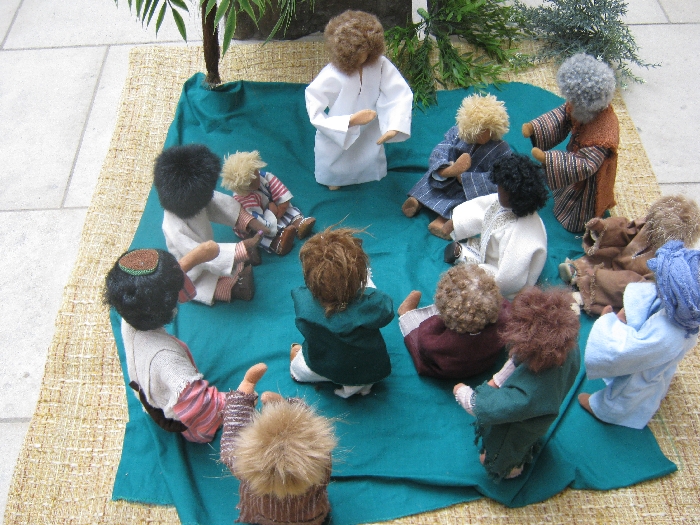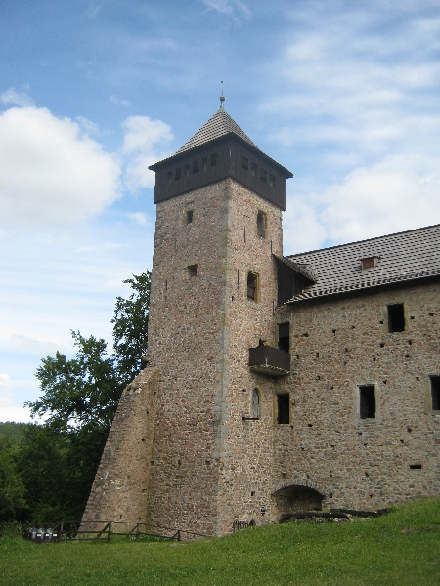
In advance of our recent holiday in the Orlické hory, I followed my usual practice and spent some time examining detailed maps of the area, looking for interesting places to walk and to visit. For those who don’t know, my first degree is in Geography and I’ve had a life-long love of maps 🙂
In the southern foothills of the Orlické hory, I spotted a wooded rocky outcrop, surrounded on three sides by the Divorká Orlice – ‘Wild Eagle River’, on top of which were the ruined remains of a castle – Hrad Litice / Litice Castle. It looked like a fascinating place so I put it on my ‘places to visit’ list for our holiday.
Hrad Litice / Litice Castle was a little too far to walk to from where were staying. So instead, we drove to Popluží, just west of the town of Žamberk, and set out on a circular walk to the castle and back again. I chose the outward route in the hope of getting a view of the castle from a nearby hillside, before dropping down into the village of Litice nad Orlicí itself. As you can see below, I was not disappointed.
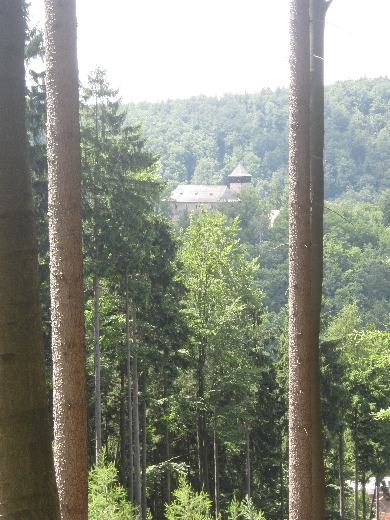
The castle itself, dates from the thirteenth century and has had a chequered history, reflecting much of the wider history of what is now the Czech Republic. At one point, it was a stronghold of Jirí z Podebrad, a Hussite King of Bohemia. After the defeat of the Protestant forces of the Bohemian Estates by the Catholic League, at the Battle of Bílá hora / White Mountain in 1620, it fell into disuse and disrepair. Repairs were carried out in the latter part of the nineteenth century, and during the 1920s and 1930s, by an Irishman who owned the fortress at that time. He was predominantly responsible for the way the remains of the castle now appear today.
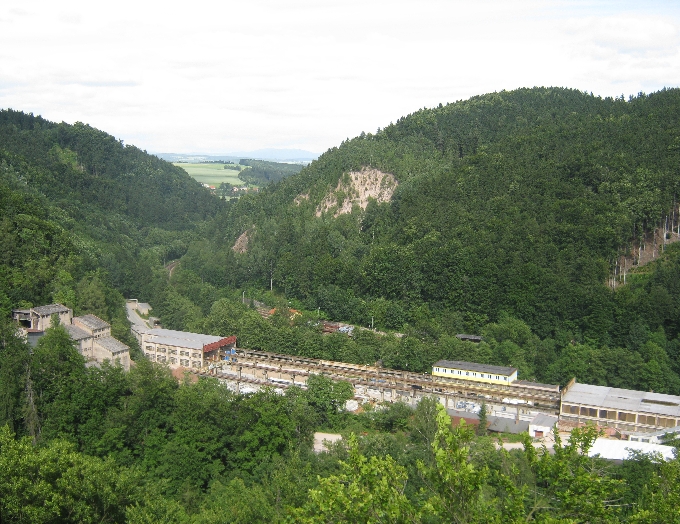
The view from the top of the castle tower is quite spectacular, only spoilt by the neighbouring stone quarry 🙁 However, one always has to remember that if roads and railways are to be built and existing ones maintained, then gravel and stone chips are essential and they have to come from somewhere!

Although only the lower part of much of the castle fortifications now exists, it is still possible to see the thickness of the original exterior walls, with the appropriate orifices from which any surrounding enemy could be fired upon.
Having visited the castle, we returned down the hill to the village of Litice nad Orlicí, and then set out on our return walk along the valley of the Divorká Orlice – ‘Wild Eagle River’, to Popluží, where we had left the car earlier in the day. The combination of a walk through attractive fields and forests, together with a visit to a historic castle, made for a most enjoyable day.
